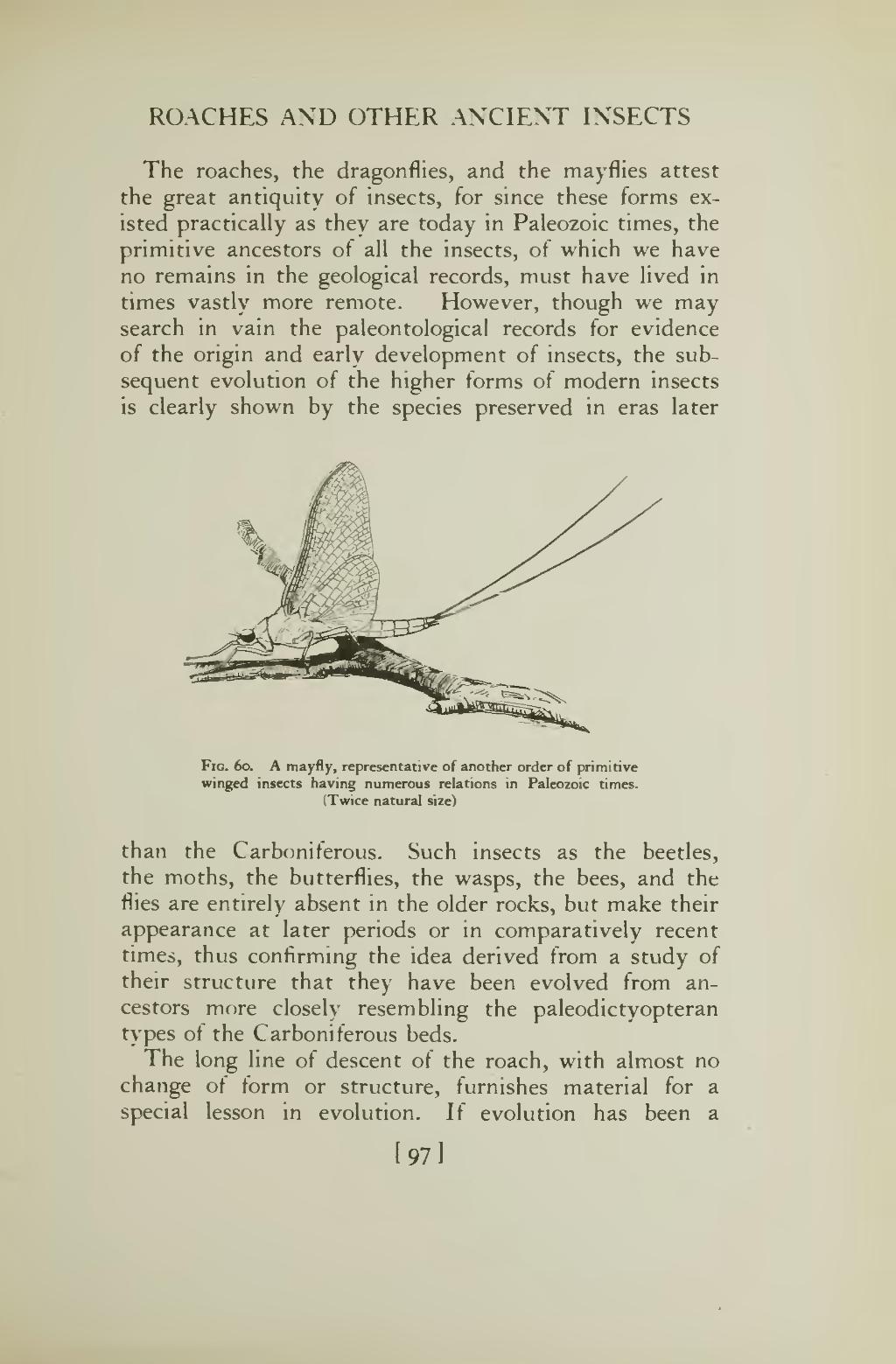ROACHES AND OTHER ANCIENT INSECTS
The roaches, the dragonflies, and the mayflies attest the great antiquity of insects, for since these forms existed practically as they are today in Paleozoic times, the primitive ancestors of all the insects, of which we have no remains in the geological records, must have lived in times vastly more remote. However, though we may search in vain the paleontological records for evidence of the origin and early development of insects, the subsequent evolution of the higher forms of modern insects is clearly shown by the species preserved in eras later

Fig. 60. A mayfly, representative of another order of primitive winged insects having numerous relations in Paleozoic times. (Twice natural size)
than the Carboniferous. Such insects as the beetles, the moths, the butterflies, the wasps, the bees, and the flies are entirely absent in the older rocks, but make their appearance at later periods or in comparatively recent times, thus confirming the idea derived from a study of their structure that they have been evolved from ancestors more closely resembling the paleodictyopteran types of the Carboniferous beds.
The long line of descent of the roach, with almost no change of form or structure, furnishes material for a special lesson in evolution. If evolution has been a
[97]
